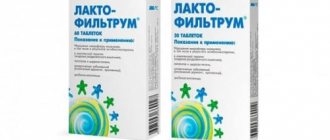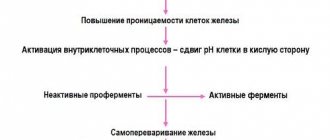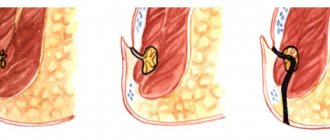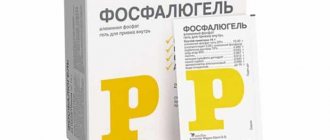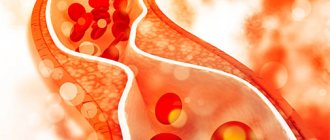The immunity of nursing mothers is weakened, for this reason they are more susceptible to infectious diseases. They are often diagnosed with inflammatory diseases of the digestive tract and genitourinary system caused by pathogens. Then women look for effective and safe medications for treatment. To avoid dangerous complications and side effects, it is recommended to consult a doctor after symptoms of infection occur.
An antibacterial agent that is used to treat infectious diseases of the digestive and genitourinary organs is called Furazolidone. A representative of nitrofurans is effective against many bacteria, some fungi and protozoa. Women are interested in the question of whether the medication can be used during lactation. Doctors say that this is possible, the main thing is to follow the dosage and rules of use.
Mechanism of action of the drug
The drug belongs to antimicrobial and antiprotozoal agents. Has a bacteriostatic effect against microbes. The mechanism of action is to disrupt the activity of certain bacterial enzyme systems. Spectrum of action: gram-positive cocci (Streptococcus, Staphylococcus), gram-negative bacilli (Escherichia, Salmonella, Shigella, Proteus, Klebsiella, Enterobacter), protozoa (Lamblia). Of the pathogens of intestinal infections, the most sensitive are the pathogens of dysentery, typhoid fever and paratyphoid fever.
When taken orally, it is rapidly absorbed from the gastrointestinal tract and distributed into tissues, including the central nervous system.
Therapeutic concentration in the blood remains for 4-6 hours. It does not create high concentrations in the blood and tissues (including the kidneys), since it is largely rapidly metabolized in the liver. The main route of elimination is renal excretion (65%). It is partially excreted in bile, reaching high concentrations in the intestinal lumen, which makes it possible to use it for intestinal infections. In case of renal failure, the drug accumulates in the blood due to slower excretion.
General provisions and release forms
Furazolidone belongs to the group of nitrofurans - antibacterial synthetic drugs that disrupt vital processes in the cells of pathogenic microorganisms. The active substance of the drug is furazolidone. One tablet contains 50 mg of the drug. This figure is also present in the name of the medicine - Furazolidone 50. The drug also contains additional ingredients: silicon dioxide, calcium stearate, potato starch, lactose monohydrate.
Furazolidone is available in the form:
- Furazolidone 50 tablets: the average price of a package of 10 tablets is 65 rubles, a package of 20 tablets is 110 rubles;
- granules for preparing a suspension;
- powder (but it is more often used in veterinary medicine).
For children who still find it difficult to swallow a tablet, granules are convenient - to obtain a suspension, they are dissolved with warm water. The required dose is measured using a measuring cup (included in the package with the medicine). Children over 3-4 years old are already quite capable of coping with the pills.
Suspension for children is a convenient treatment option.
You can buy Furazolidone at any pharmacy without a prescription. However, before giving the drug to children, consult a pediatrician: there are contraindications and serious adverse reactions are possible.
Furazolidone destroys the membranes of microbial cells that create pathogenic microflora and stops biochemical reactions in them. Bacteria die (bactericidal effect) or stop reproducing (bacteriostatic effect). The result of taking the drug is determined by its dosage - shock portions cause the destruction of pathogenic microflora, smaller doses stop its growth.
The medicine is effective against oxygen-requiring aerobic bacteria - both gram-negative (have strong, impermeable cell membranes) and gram-positive (to a lesser extent). But in the fight against anaerobic microorganisms that live and reproduce without access to air, and pathogens of purulent infections, the drug is practically powerless. At the same time, the product is detrimental to many protozoa (giardia, trichomonas) and fungi from the genus Candida.
Most antibiotics are more effective than Furazolidone in combating pathogens. However, they have a depressing effect on the immune system, while nitrofuran has a mild immunostimulating effect. In particular, this occurs due to the activation of phagocytosis - the ability of leukocytes to suppress and dissolve bacteria. Another pleasant difference is the slow development of bacterial resistance to the components of Furazolidone. Pathogenic microflora adapts to the action of antibiotics much faster.
The drug is used for the symptomatic treatment of diarrhea.
The patient taking the medicine improves much earlier than laboratory tests show the absence of bacteria. The fact is that the remedy immediately suppresses the activity of pathogenic microbes: they stop poisoning the body, and the painful symptoms gradually disappear.
A special feature of the drug is its ability to weaken the action of the enzyme responsible for the breakdown of adrenaline. Therefore, patients often experience mild agitation while taking the medication.
The concentration of the substance is also high in the cerebrospinal fluid. Therefore, the medicine is also used in the treatment of inflammation of the meninges.
Furazolidone: what are these tablets for?
The active component works well within the intestines. Noticeable concentrations of the substance are created in the blood and cerebrospinal fluid, but there are no significant systemic effects. Antimicrobial properties are predominantly manifested within the intestinal cavity, so the product is used to eliminate infectious processes in this area. In the liver tissue, the active component changes to form a metabolite that does not have medicinal properties.
The drug is used in gastroenterological practice to eliminate infectious processes in the intestines. The activity of the chemical compound mainly in the intestinal area determines the specificity of the prescriptions. Prescribed only by a doctor after identifying signs of the disease. It is used in the treatment of pathologies caused by pathogens sensitive to the active component. Main indications:
- dysentery infection;
- bacterial infectious process due to food poisoning;
- inflammation of the kidney tissue;
- inflammation of the urethra;
- cholera;
- trichomonas infection;
- paratyphoid fever;
- Giardiasis.
Only a specialist can competently assess the patient’s condition and prescribe medication. In modern practice, the medicine is usually prescribed only for intestinal bacterial infections.
Indications for use
The pharmacological effect of Furazolidone largely depends on the doses taken: at low doses the drug has a bacteriostatic effect, and when they increase, it has a bactericidal effect. The mechanism of antimicrobial action is that the nitro groups included in the Furazolidone molecules, under the influence of microbial enzymes, are reduced to amino groups, which are very toxic to bacteria. Amino groups disrupt the integrity of bacterial cell membranes and block many biochemical processes in them.
As a result, microorganisms lose their ability to further grow and reproduce. According to reviews, Furazolidone also has a slight immunostimulating effect. It lies in the ability of the drug to increase the phagocytic activity of white blood cells (leukocytes) and the compliment titer. This drug is used to treat inflammatory and infectious diseases of the genitourinary system, gastrointestinal tract and skin. According to the instructions, Furazolidone is used to treat the following diseases:
- Typhoid and paratyphoid;
- Bacillary dysentery;
- Giardiasis;
- Enterocolitis;
- Diarrhea caused by infectious causes, in particular food poisoning;
- Trichomonas infection;
- Cystitis, urethritis;
- Infected burns and skin wounds.
What is the drug used for?
Furazolidone - an antibiotic or not? Not an antibiotic. This is a synthetic antibacterial agent derived from 5-nitrofurforol, which differs from true antibiotics in the mechanism of action on microorganisms and the effect on the human body. The drug is effective in the treatment of inflammatory diseases caused by gram-negative aerobic bacteria. Gram-positive aerobic bacteria are less sensitive to it, as are fungi and protozoa.
Anaerobic pathogens are insensitive to Furazolidone.
The pharmacological effect of this drug depends on the dosage. At low doses the medication has a bacteriostatic effect, and with increasing doses it has a bactericidal effect. The antimicrobial effect is based on the fact that the nitro groups included in the drug are reduced to amino groups under the influence of microbial enzymes and become toxic to them. Indications for use of the drug include:
- cystitis;
- pyelitis;
- cholera;
- dysentery;
- local treatment of infected wounds and burns;
- giardiasis; paratyphoid fever;
- trichomonas colpitis and urethritis;
- food toxic infections.
Furazolidone for cystitis in women
Furazolidone is an antiprotozoal and antimicrobial agent. Its components help block the growth of pathogens, affecting their viability at the cellular level. Gram-positive bacteria, in particular streptococci and staphylococci, are considered sensitive to the drug. Effective against gram-negative microbes (Proteus, Escherichia, Salmonella, Klebsiella). The remedy against Trichomonas actively helps. The components are quickly absorbed by the digestive organs.
Distribution: in body tissues. Plasma concentrations can persist for four to five hours. There are some contraindications to the use of tablets. These are:
- hypersensitivity to components;
- chronic renal failure;
- breastfeeding period;
- children under one year of age;
- lactose deficiency.
Caution must be observed when taking the drug in the treatment of patients with diseases of the nervous system and liver failure.
Instructions for use
Furazolidone is of synthetic origin. Anaerobic bacteria are the most sensitive to it. As a rule, this drug is not used to treat infections caused by anaerobic bacteria or fungi, since it is not able to effectively cure them. Moreover, in most cases, Furazolidone is completely ineffective in treating this type of infectious disease. Then doctors select another remedy that can eliminate rotavirus or other infection.
When using minimal doses of the drug, the necessary bacteriostatic effect is achieved. As for taking increased doses of Furazolidone, they are necessary directly for the bactericidal effect. After taking the drug, it undergoes complete absorption directly in the intestine in a fairly short period of time. The maximum concentration of the active substance in the blood is achieved only 5-6 hours after the patient takes the tablet.
The drug is excreted from the body in the same form as it was received, and only a small percentage of it is metabolized.
Before taking the drug, you should study the detailed description, which contains all the recommendations for taking and dosing the tablets.
The drug directly in tablet form is intended for internal use, which is preferably taken after meals. When taking the tablet, it must be swallowed whole and washed down with plain water - chewing the medicine is not recommended at all.
How to take for cystitis?
Cystitis is an infectious disease that leads to the development of an inflammatory process in the bladder due to the penetration of bacteria, E. coli, and streptococci. The disease begins to develop initially in an acute form, but in the absence of therapeutic measures it quickly progresses, becoming chronic and relapsing. The main thing is not to start the disease, quickly direct measures to suppress the bacterial flora in the bladder.
Otherwise, the infection will enter the bloodstream and can lead to damage to other internal organs.
Furazolidone, as an antibiotic with a wide spectrum of effects, is taken orally, mainly after meals. 1 tablet whole, washed down with clean water (1 glass). When choosing a dosage, you need to take into account weight, especially when taking it to children. A single dose should not exceed 10 mg per 1 kg of body weight.
You can take it according to the following scheme: the first 3 days - 10 mg per 1 kg of weight every 6-8 hours; take a break for 3 days; get tested. Dosage for adults: 1 tablet every 6-7 hours. The treatment course is 5 days.
The dosage should not exceed 16 tablets of 50 mg per day. You can take 2 pieces. at a time 3 times a day, but in order to avoid overdose, exceeding doses is unacceptable.
Taking into account individual indications and test results, it is possible to extend the course. But usually, after the initial treatment, a break is taken for 3 days and patients are asked to take a control test so that the attending physician can develop subsequent treatment tactics, determine the method of treatment and acceptable doses.
Indications for the use of furazolidone
Furazolidone is prescribed in case of the following diseases:
- dysentery;
- shigellosis;
- trichomoniasis (if the use of nitroimidazoles was unsuccessful);
- giardiasis;
- paraphytes;
- food intoxication;
- burns and wounds that have become infected:
- diarrhea;
- trichomonas colpitis;
- urethritis;
- cystitis;
- pyelitis.
Contraindications and overdose
The medicine should not be used if:
- the patient has increased sensitivity to Furazolidone;
- end-stage chronic renal failure was diagnosed;
- Furazolidone is also not prescribed to children under 1 month of age;
- the drug is contraindicated in case of lactose and glucose-6-phosphate dehydrogenase deficiency.
Indications for Furazolidone in pregnant women should be carefully checked. During lactation and pregnancy, Furazolidone can be used only if the benefit to the mother is greater than the potential risks to the fetus. The drug should be prescribed with extreme caution to people who have diseases of the nervous system and liver. It is not recommended to prescribe Furazolidone to patients whose work requires high concentration and quick reactions.
If the patient has taken large doses of the drug Furazolidone, he experiences toxic liver damage, including acute toxic hepatitis. According to reviews, Furazolidone (in overdose) can lead to hepatotoxic as well as neurotoxic effects. There are no specific antidotes. In this case, it is necessary to perform gastric lavage, as well as take sorbents and saline laxatives. In case of overdose, specialists prescribe B vitamins and antihistamines. If necessary, infusion therapy should be carried out, which is aimed at maintaining water and electrolyte balance.
Furazolidone for breastfeeding
As the instructions say, a nursing mother should take the medicine under the supervision of a doctor, for medical reasons and not exceeding the dosage. After taking the pills, it is necessary to monitor the newborn, especially if he is younger than 1 month. This is due to the fact that the medicine enters the baby’s body along with mother’s milk and provokes negative reactions (stomatitis, dermatitis, diarrhea).
Even with a severe infectious disease, mothers can take an antibiotic without interrupting lactation. In case of intestinal infections, you can also continue breastfeeding, but only if the poisoning is severe.
Thus, Furazolidone during breastfeeding is allowed to be used for the treatment of infectious diseases after a doctor’s prescription.
You can continue to breastfeed your baby. A lactating woman should follow the dosage determined by the doctor and monitor the baby’s condition. If side effects occur in a baby, you should consult a doctor. Subscribe to our VKontakte group
Side effects
The drug has low toxicity, however, in some cases, side effects may develop during furazolidone therapy, including:
- From the gastrointestinal tract: anorexia, nausea, vomiting, pain in the epigastric region.
- Allergic reactions: skin rash, itching, urticaria, Quincke's edema.
- To reduce the severity of side effects, it is recommended to drink the drug with plenty of water, as well as take B vitamins and antihistamines. In case of pronounced side effects, you should stop taking the drug and consult your doctor.
- With long-term use of the drug, hemolytic anemia and methemoglobinemia may develop (mainly in newborns and infants), as well as shortness of breath, cough, hyperthermia and neurotoxic reactions.
- The drug during pregnancy should be taken strictly as prescribed by the attending physician, who must carefully weigh the expected benefits for the mother and the potential risks for the fetus.
- If it is necessary to use the drug during lactation, the issue of possible interruption of breastfeeding should be addressed, since furazolidone passes into breast milk and can cause the development of hemolytic anemia and methemoglobinemia in infants.
Dosage for children with diarrhea
The official instructions contain information that diarrhea powder and tablets for children containing furazolidone can be given from the age of one year.
In medical practice, the age of patients who are prescribed this antibacterial drug is much higher - 3 years and older. Dosing is individual for each individual victim. Calculation formula: 10 mg / 1 kg body weight. Using this formula, the daily dosage is calculated, the resulting figure must be divided into 3-4 doses.
Example: if a child weighs 20 kg, then the daily dose is 200 mg. From this it turns out that per dose there is 50 mg of Furazolidone - 1 tablet of 0.05 g.
The tablet form is allowed to be taken only after the child reaches three years of age.
- 3-year-old child - ½ tablet, number of doses - 3 times a day.
- 3 to 12 years old - take 1 tablet 3 times a day.
- In older age - 1 ½ tablets up to 4 times a day.
Furazolidone is prescribed to children only by the attending physician; the dosage in tablets for diarrhea is calculated individually, depending on the severity of the disease, characteristics of growth and development, and the presence of chronic diseases.
Therapy lasts no more than 7 days. Improvements in the condition occur 2-3 days after taking the first dose.
If heavy diarrhea continues after 5-7 days, you should contact your doctor to review the treatment regimen.
For young children, the use of Furazolidone suspension is indicated. It is prepared from granules. For dilution, water is used, which is added to the bottle up to the indicated mark. The prepared solution is stored in the refrigerator until the end of the therapeutic course. Before use, the contents should be shaken well.
Daily dosage of Furazolidone suspension:
- 0-1 year - maximum volume reaches 4 ml;
- at the age of 1 to 2 years - the dose is increased to 5 ml;
- for 2-4 year old children, 6-7 ml of the drug is indicated;
- children 5-6 years old are allowed to increase the dose to 7.5-8.5 ml.
The drug in liquid form is approved for use in infants. If a newborn baby gets sick, it is necessary to choose an analogue with a safer effect. At one month and older, treatment with a liquid suspension of Furazolidone is possible, but strictly as prescribed by a doctor and under his regular supervision.
Features of using Furazolidone to increase therapeutic effectiveness:
- The tablet or suspension is drunk after meals. This helps the active substance to be absorbed faster into the digestive organs.
- To enhance the effect, it is recommended to take the antibacterial drug with plenty of water.
- According to the doctor's decision, it is possible to combine it with sorbents for diarrhea caused by poisoning, toxins, or poor-quality food.
The duration of the course is determined by the pediatrician. Norm: 7-10 days for children over 1 year.
What information is missing from the article?
- More drug analogues
- Contraindications for concomitant diseases
- Dosage of the drug
- When will the effect of use be noticeable?
- What drugs should not be combined with?
View results
Interaction with other drugs
Furazolidone can interact with other drugs. The following effects are observed:
- with simultaneous use of ristomycin or chloramphenicol, the inhibition of hematopoiesis increases;
- the effect of furazolidone becomes stronger if tetracycline or aminoglycosides are taken simultaneously;
- those substances that alkalize the urine accelerate the excretion of the drug in the urine, and those that acidify it, on the contrary, slow it down;
- in combination with antidepressants, ephedrine, tyramine, etc. there may be an effect of increasing blood pressure;
- Under no circumstances should it be taken with alcohol due to the possibility of developing a disulfiram-like reaction.
There are also a number of additional effects when taken together with other medications, so be sure to consult a doctor before taking it. Carefully:
- chronic renal failure;
- deficiency of glucose-6-phosphate dehydrogenase;
- diseases of the liver and nervous system;
- It is necessary to refrain from drinking alcohol during treatment with the drug due to possible interactions.
Furazolidine analogs
To save money, Furazolidone can be replaced with cheaper analogues that differ slightly in composition, but still have a similar therapeutic effect.
- Furamag
. The main component of the drug is furazidin. It has a bacteriostatic effect on a large number of pathogenic bacteria - gram-positive cocci and gram-negative rods, on protozoa, - Furagin
. The drug is close in effectiveness of the active ingredient to Furazolidone. The main purpose of the drug is to reduce the activity of bacterial strains that are resistant to other antibacterial agents. Furagin is a cheap drug, but it has many contraindications. - Nifuroxazide
. There is no better antimicrobial agent for the treatment of diarrhea in children than Nifuroxazide. It can also be taken during pregnancy and breastfeeding. - Furadonin
. If you need an antimicrobial agent for the treatment of diarrhea, which has properties similar to Furazolidone, but is slightly higher in cost, you can pay attention to Furadonin. The main difference between the drug and Furazolidone is that it can be taken not only for indigestion, but also for infections of the genitourinary system. - Enterofuril
. For diarrhea, vomiting, intestinal colic caused by indigestion, patients may be prescribed the antimicrobial drug Enterofuril. It helps reduce the activity of pathogenic microorganisms and eliminate them from the intestines.
Which is better: Furazolidone or Enterofuril?
Pay attention to the following nuances:
- For the production of Furazolidone, a substance with the same name is used. Enterofuril contains nifuroxazide.
- The first is produced by Russian pharmaceutical companies exclusively in the form of 50 mg tablets. The second can be found on pharmacy shelves in the form of capsules of 0.1-0.2 g and suspension. Manufacturer: Bosnalek JSC, Bosnia and Herzegovina.
- Furazolidone has not only antibacterial properties, but also antiparasitic ones. Therefore, it is better to use it in identifying giardiasis, dysentery caused by amoebas. The effectiveness of treatment for this diagnosis is about 90%. Recommended against typhus, enterocolitis, and is used in the complex treatment of vaginitis, cystitis, colpitis, urethritis, and skin burns.
- Enterofuril is indicated for diarrhea of unknown nature, infectious process, diarrhea provoked by medications.
- But many pediatricians are confident that diarrhea in a small child should be treated with Enterofuril. Unlike its brother, this drug is not absorbed into the bloodstream and has a local effect. This quality reduces the risk of side effects. For the treatment of intestinal infections in infants, the drug is used in the form of a suspension. Treatment is also permitted with caution during pregnancy.
- It is advisable to take furazolidone along with a diet. It is better to exclude alcoholic beverages from the diet, since drinking alcohol together with the drug provokes the development of nausea, increased heart rate, decreased blood pressure and temperature, and redness of the skin. At the same time, the pharmacological effect on the body increases.
- Enterofuril does not destroy beneficial microflora, so there is no need to take pre- and probiotics.
- When assessing the safety of Enterofuril and Furazolidone, it is better to choose the first option.
Analogs that are suitable for children
An analysis of the pharmacological market shows that other drugs containing the active ingredient furazolidone are not produced. But in pharmacy chains you can find similar analogues, including for treating children. They differ in the active substance, but are very similar in effect.
Many of these drugs are available in the form of tablets, others in the form of a suspension, which is also convenient for treating a small child. Analogs of Furazolidone can be considered:
- Enterofuril. Available in the form of a suspension or capsules. Its active component is niforoxazide. This is one of the most expensive furosalidone substitutes. Its price is justified by its quality. The chemical composition of the drug has a higher purity, and, according to manufacturers, has less negative effects on the body.
- Nifuroxazide. Tablets and suspension for children. The drug is also a nitrofuran derivative with the active ingredient nifuroxazide. Suppresses the activity of bacteria that cause intestinal and other infections.
- Phthalazol. Release form: tablets. The active ingredient is phthalylsulfathiazole. An inexpensive and effective drug against many anaerobic bacteria.
- Stopdiar. For adults, coated tablets are available, for children - a suspension. The active ingredient is nifuroxazide. Kills various strains of bacteria and viruses.
There are many other substitutes for Furazolidone. Each atypical situation in the treatment of infectious invasions requires an individual approach. This is most typical for pediatric therapy. Only a complete examination of the sick child’s condition and its characteristics allows the doctor to make the right choice of drug. Self-medication is always dangerous, both for adults and babies.
Among parents who treated their children with Furazolidone, there are many good reviews, but there are also mixed ones. The affordable price of the drug is often noted as a plus. For people who are not using Furazolidone for the first time, it is considered a must-have medicine for the home medicine cabinet. This category of patients experiences rare and minor side effects with a rapid recovery of the child. There are also quite suspicious mothers and fathers who are forced to refuse treatment with this drug by an impressive list of contraindications and negative consequences.
Additional Information
The use of doses not specified in the instructions (overdose) may be complicated by the formation of the following negative consequences: toxic damage to liver tissue, inflammation of liver tissue, inflammation of nerve tissue due to the action of the substance, toxic effect on the blood. You need to seek medical help as soon as possible. Specialists rinse the stomach cavity, prescribe adsorbents and laxatives. The ratio of electrolytes and fluid in the body is maintained. B vitamins and antihistamines are sometimes used. Dialysis may be prescribed. Effects of mutual use of several drugs are possible.
If the patient plans to use other medications together with furazolidone, you should consult your doctor.
It is forbidden to take the product together with ethyl alcohol due to the high risk of developing disulfiram-like complications. Blood pressure increases when used together with antidepressants, tyramine, amphetamine, ephedrine, phenylephrine and medications that inhibit monoamine oxidase. Use together with the listed medications is prohibited. Strengthens the suppression of hematopoietic function when used together with chloramphenicol or ristomycin.
Medicines that change the urine environment to the alkaline side weaken the medicinal properties of the drug. Medicines that change the urine environment to the acidic side improve the medicinal properties of the drug. Medicines of the aminoglycoside and tetracycline groups increase the antibacterial effect of the active component.
Indications and methods of administration for children
Before giving Furazolidone at the first signs of illness, it is necessary to conduct an examination and consult with a pediatrician. A child’s complaints of abdominal pain do not always mean an acute intestinal infection and require immediate medical treatment. The drug is prescribed only if the doctor confirms the infectious nature of the disorder.
The most common ones may be:
- Various forms of dysentery (Shigella infection).
- Paratyphoid fever (spreads salmonella).
- Food poisoning.
- Giardiasis.
- Rod or coccal infections.
During an acute gastrointestinal disorder, a child may develop water or electrolyte imbalance due to frequent vomiting and diarrhea. In addition to antibacterial treatment, it is necessary to carry out rehydration (replenish fluid volume) and restore the intestinal microflora. There are special medications for this.
The use of nitrofurans to treat bactericidal infestations of a child is possible only from the age of twelve months. Prescribing them to children under one year of age is strictly prohibited in any of the available forms.
Until the child is 5 years old, the only possible way to treat with Furazolidone is to use a suspension. It is obtained from granulated powder, diluted with warm boiled water to the required volume. For children over five years of age (with rare exceptions, treatment at 3 years of age is allowed) the drug can be given in tablets.
Dosing Features
The daily dosage is determined by the child’s weight. The calculation should be 10 mg per 1 kg of body weight. The resulting figure should be divided into three or four doses. The medicine is given strictly after meals at regular intervals. If these are tablets, wash them down with plenty of water. The duration of treatment can be from 3 to 5 days. The maximum course of therapy is limited to ten days.
Illustrative examples of how to properly give Furazolidone to children:
- The sick child is 2–3 years old and weighs almost 12 kilograms. Use only suspension. The daily dose of the drug will be 10 ml * 12 kg = 120 ml. Divide into 3-4 equal parts and calculate a single dose. It turns out that the baby needs to be given 30 or 40 ml of Furazolidone once a day, respectively.
- It is expected to treat a child over six years old, whose weight is 20 kg. Apply the tablets. Calculate the daily volume of the drug according to the scheme - 10 mg * 20 kg = 200 mg. Similarly, divide into an equal number of doses and get 50 mg, which is equal to 1 tablet.
The duration of therapy depends on the diagnosis and severity of the disease.
Advantages and disadvantages of the drug
The drug has positive and negative effects. The medication perfectly fights bacteria that provoke inflammation of the mucous membrane of the bladder. With the help of these tablets, unpleasant symptoms such as itching, burning and frequent urination are achieved. The positive effects of the product begin within the first days after use. The medicine interacts with other medications when prescribed together with tetracyclines and aminoglycosides. The active substance does not conflict with herbal preparations against inflammation of the bladder mucosa - “Canephron” and “Urolesan”. Furazolidone is quickly absorbed into the digestive tract, and the concentration in the blood is maintained for 4-6 hours.
A positive quality is the affordable price.
Does Furazolidone help given such a low price? Of course yes. Also among the positive characteristics of the drug, it is worth noting less toxicity compared to other drugs, such as Nolitsin and Ciprofloxacin.
The disadvantages of the drug include the following features: the concentration in the kidneys and tissues is extremely low, so only infections of the gallbladder and intestines can be treated. In these places, the medication accumulates better and reaches concentration. The drug should not be used in patients suffering from severe liver and kidney diseases. Treatment of cystitis with Furazolidone is a way to help the bladder get rid of pathogens and cleanse
Application and dosage
Method of administration: oral. The pill is swallowed whole (no need to chew) and washed down with filtered water. The daily dosage for toxic infections, paratyphoid, dysentery is from 2 to 3 pills four times for 7 to 10 days.
The medication is used for vaginitis, 2 tablets three or four times. Treatment lasts 3 days. In addition, the vagina is treated with 5 g of powder, which consists of lactose with Furazolidone in a ratio of 400:1. For inflammation of the urethra caused by Trichomonas, take 2 tablets four times for 3 days.
The antibiotic is used for infections caused by Giardia. The daily dosage of the drug for adults is 2 pills four times, and for patients of the younger age category - at the rate of 10 mg/kg of total weight. The daily dose of medication is divided into 3 times.
The medication is used to heal infected wounds and burns. To do this, create a solution of Furazolidone (1:25000), which is used to soak the bandages or irrigate the damaged surface. When breastfeeding, the daily dose of the medicine is determined by the doctor.

